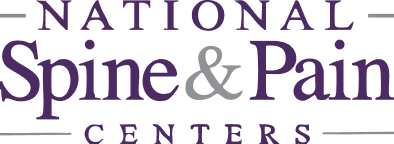Discogenic Back Pain
Back Pain Specialists Are Ready to Help
The discs in our spine help keep the vertebrae steady and absorb shock. Over time, these discs wear down, which can cause persistent pain in the back or neck. Discogenic lower back pain typically occurs between the ages of 30 and 60.
If you are suffering from back pain, you’re likely having trouble living your daily life without interruption. Thankfully, solutions are available. Disc-related back pain is a very common problem, and it can often be treated without surgery.
What Is Discogenic Back Pain?
Discogenic back pain refers to pain that is due to degenerative changes in the intervertebral discs, the space between your spinal discs.
This type of pain can be the result of many different underlying factors and can manifest in various ways.
Symptoms of Discogenic Back Pain
While each patient’s back pain is unique, some common symptoms of discogenic low back pain can include the following:
- Constant pain in the buttock or one or both of the legs
- Sharp back pain while lifting, bending, twisting, standing, or sitting
- Tingling or numbness in legs
- Lower back spasms
Discogenic lumbar pain can sometimes be relieved by shifting positions, especially when lying down. However, some symptoms of back pain could be the result of another underlying condition not related to discogenic disease, so it is important to get a diagnosis from a back pain specialist.
What Causes Discogenic Back Pain?
Finding the root cause of discogenic back pain has been proven difficult. Over time, our spinal discs wear down, which can lead to pain. This wear and tear of our discs can lead to a number of conditions, including discogenic pain, herniated discs, and more.
What makes disc degeneration lead to discogenic pain specifically can be inflammation in the nerves in our intervertebral discs, genetics, or damage to the area of the intervertebral discs.
Other than those with genetic predispositions, the people most at risk of developing discogenic back pain include aging populations and occupational jobs that involve excessive stress on your spinal column through sitting or long hours of sitting in a motor vehicle.
Treatment Options for Discogenic Back Pain
Like all back pain, determining the cause of back pain is essential to treating it. There are many conditions that can cause back pain, so it’s necessary to stick with conservative treatments until your doctor is sure they’ve found the problem.
The diagnostic procedure begins with a thorough physical assessment. This will include a review of your medical history, analysis of your symptoms, and physical examination. Imaging devices such as X-rays, MRI, or CT scans may be used to take a closer look at the spine. This information will help pinpoint the source of the pain.

-
1Get Started!Find a Doctor or Location that’s best for you! Find a Doctor
-
2Schedule an Appointment
-
3Prepare for AppointmentComplete the pre-appointment paperwork before your visit.
-
4See You at Your Appointment!We appreciate your trust and look forward to building a care plan for you.
-
Pioneering Pain
SolutionsOur doctors don't just use advanced treatments—they pioneer them. -
Quality-Assured
CareComprehensive quality protocols ensure consistent, exceptional care. -
Learning &
LeadingContinuous training and education keep us at the forefront of pain management. -
A Mission
of ReliefYour freedom from pain isn't just our goal—it's our reason for being.

